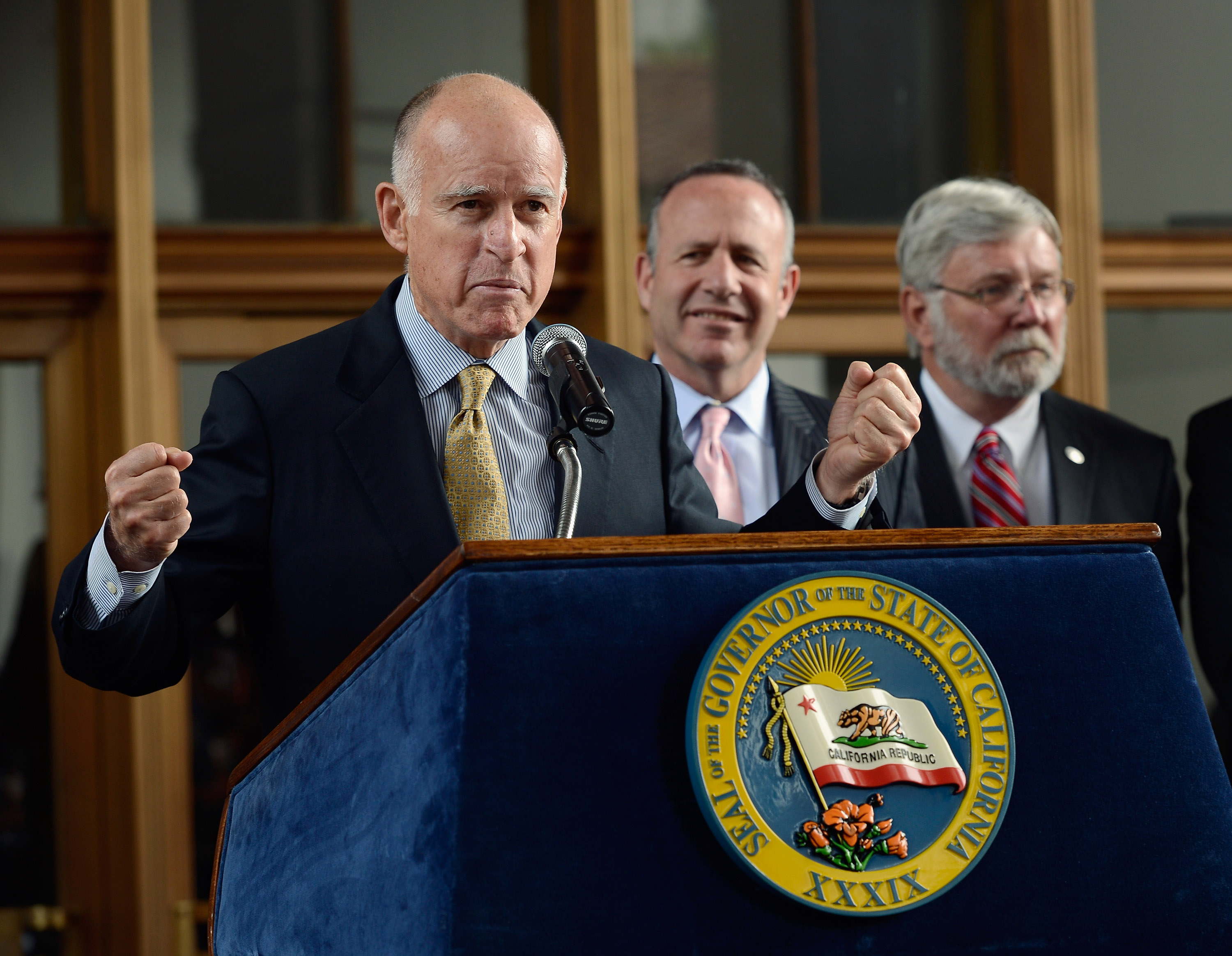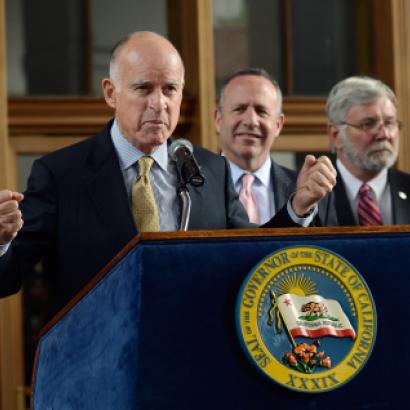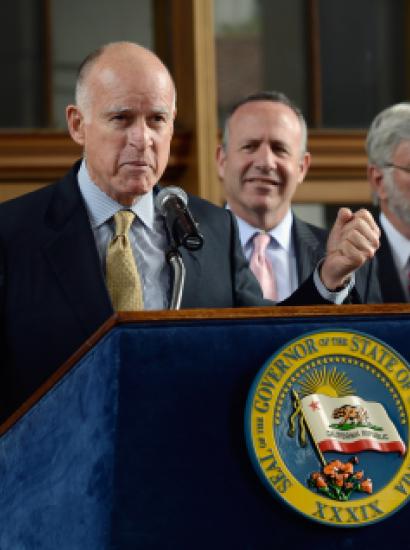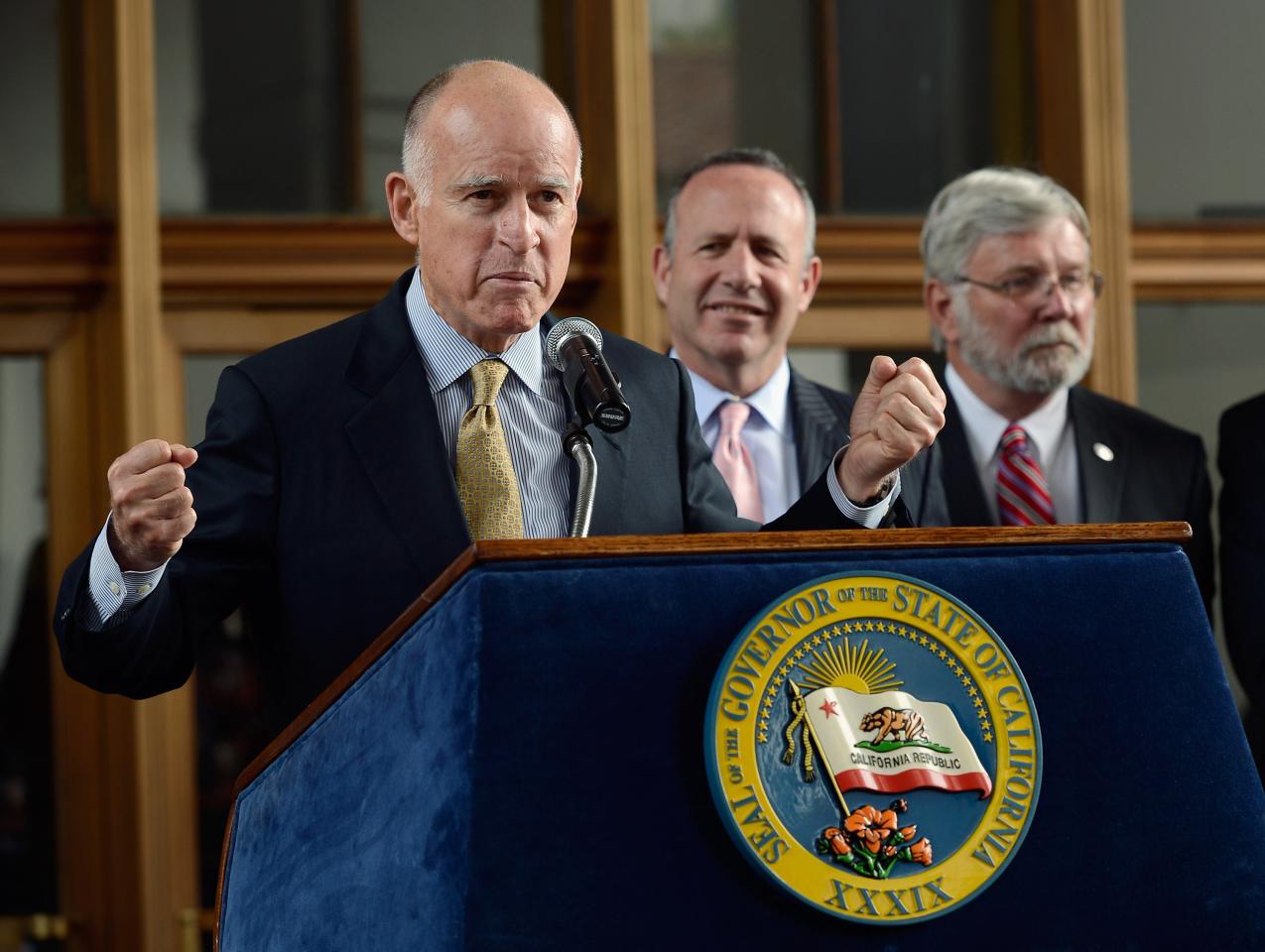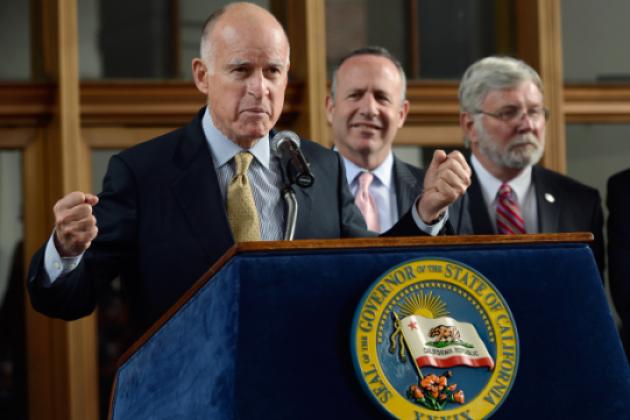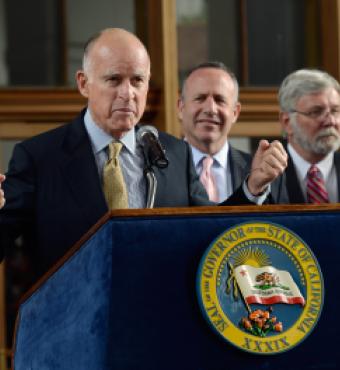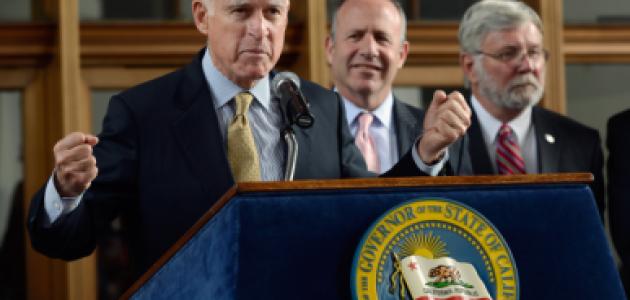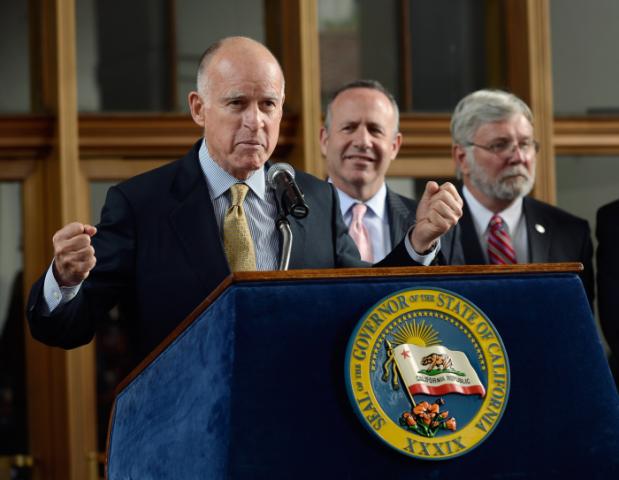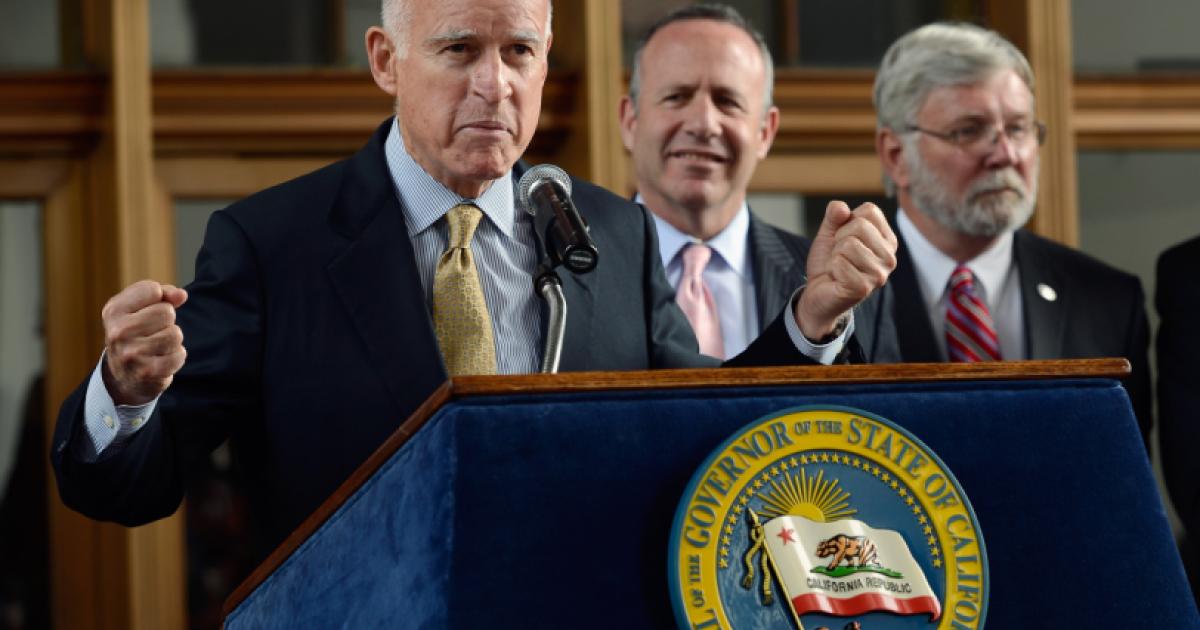Five days into 2015, we have some answers as to where California Gov. Jerry Brown wants to take America’s nation-state – the Golden State’s longest-serving chief executive on Monday morning delivering an inaugural address from the confines of the State Assembly that was also billed as his annual State of the State oration (though technically it was not a joint convention of the State Legislature).
Like most every big Brown speech over the past four years, there were two defining elements:
- The remarks (text here) were brief – hurried, really, with Brown’s trademark head-down and choppy delivery (you can watch here). And that begs the question of whether it would have killed the governor to have slowed down, stuck around longer and share more profundities (there’s more on this below).
- By lumping two big speeches into one – a rhetorical double-stuffed Oreo – Brown left a lot of important matters on the cutting room floor.
It wasn’t the first time Brown used such an observance to kill two birds with one stone. He did the same back in 1979, the other time he segued from a first to a second gubernatorial term. Maybe Brown just likes to minimize his interaction with legislators (if you’ve spent time in the State Capitol, you can’t blame him).
The highlights of Brown’s remarks:
- He drew a parallel between California challenges past and present – the same matters his father, Pat Brown, highlighted in his first gubernatorial State of the State back in 1959: discrimination, equality of education, training teachers, air pollution, realistic water program, economic development, consumer protection overcrowded prisons.
- He said wouldn’t make students in the university of California system the “default financiers” of California higher education. But Brown didn’t tip his hand as to UC funding in his soon-to-be-released budget proposal.
- Delving into long-term liabilities (“hundreds of billions of dollars”, the governor said), Brown proposed taking them on “one at a time”. That includes asking state workers to help start the pre-funding of health obligations (the applause in the chamber was both scattered and presumably Republican).
- Calling on California to “show the way” on reducing carbon emissions, Brown called for three goals to be met by 2030: increase from 1/3 to 50% electricity derived from renewable resources; reduce petroleum usage in cars and trucks by 50%; double the efficiency of building heating.
- If you’re scoring at home, Brown batted .750 on what Stanford lecturer David Crane describes as the “four shadows” looming over California’s state budget – a capital-gains-dependent tax system, unfunded pension obligations, unfunded state retiree health care obligations and explosive growth in Medi-Cal spending. Brown didn’t get into the tax system at all and gave either lip service or some mention of the other three challenges. But not in the same depth and breadth as his renewable energy proposals, which appear to be the splashiest part of Brown’s final-term agenda.
A long-running urban myth in Palo Alto holds that a Stanford University applicant wrote the following when asked to submit an essay on his most defining trait:
“Brevity”.
Supposedly, the kid was admitted.
Actually, it’s not a bad one-word choice for describing Jerry Brown’s second go-round as governor. Brown’s 2014 State of the State address lasted less than 17 minutes (about one-fourth the length of President Obama’s State of the Union remarks the same year). I clocked Monday’s hybrid address as 22 minutes.
As for his re-election effort last fall, calling it a campaign would be generous – Brown spent as little as possible on staff, overhead, media and messaging. In what’s likely a first in modern California history, the incumbent governor didn’t run a single a single television ad telling voters why he merited a second term – or, just as important, what he hand in mind (a “100-mile-an-hour” mind, as California Anne Gust Brown said in introducing her husband) if afforded another four years in Sacramento.
There are two ways to process such frugality, one being to commend the rhetorical conservation. Better to be judged as a man of deeds, not words. Right?
On the other hand, Californians deserve better. There are plenty of ways for a governor to cheap out, as Brown proved in his first two terms – living in a modest apartment, eschewing state transportation.
But on rhetoric meant to both inspire Californians and steer the Legislature, he shouldn’t skimp.
An inaugural address is meant to be a soaring moment, celebrating democracy as much as one man’s personal gain. In this case, it would have been nice had Brown built more on the significance of the moment – a historical fourth term, the longest tenure as California’s governor, plus the window beginning to close on four-plus decades in politics.
Besides, cliché though it is, California indeed is at a crossroads. The Golden State’s economy has recovered, but not overwhelmingly so (in Southern California, for example, jobs are returning but income is stagnating). Few states have as dramatic a disparity between rich and poor. On such matters as pension liability, the price of a university education, an affordable middle-class existence and shoehorning a growing population (38 million today vs. 22 million in 1979 and Brown’s last second inaugural) into a land not designed to carry such a burden.
That’s a lot to talk about in 2015 and a lot of tough choices facing California. Economizing on speeches, as Gov. Brown started the year by just doing, isn’t a good start in that direction.







